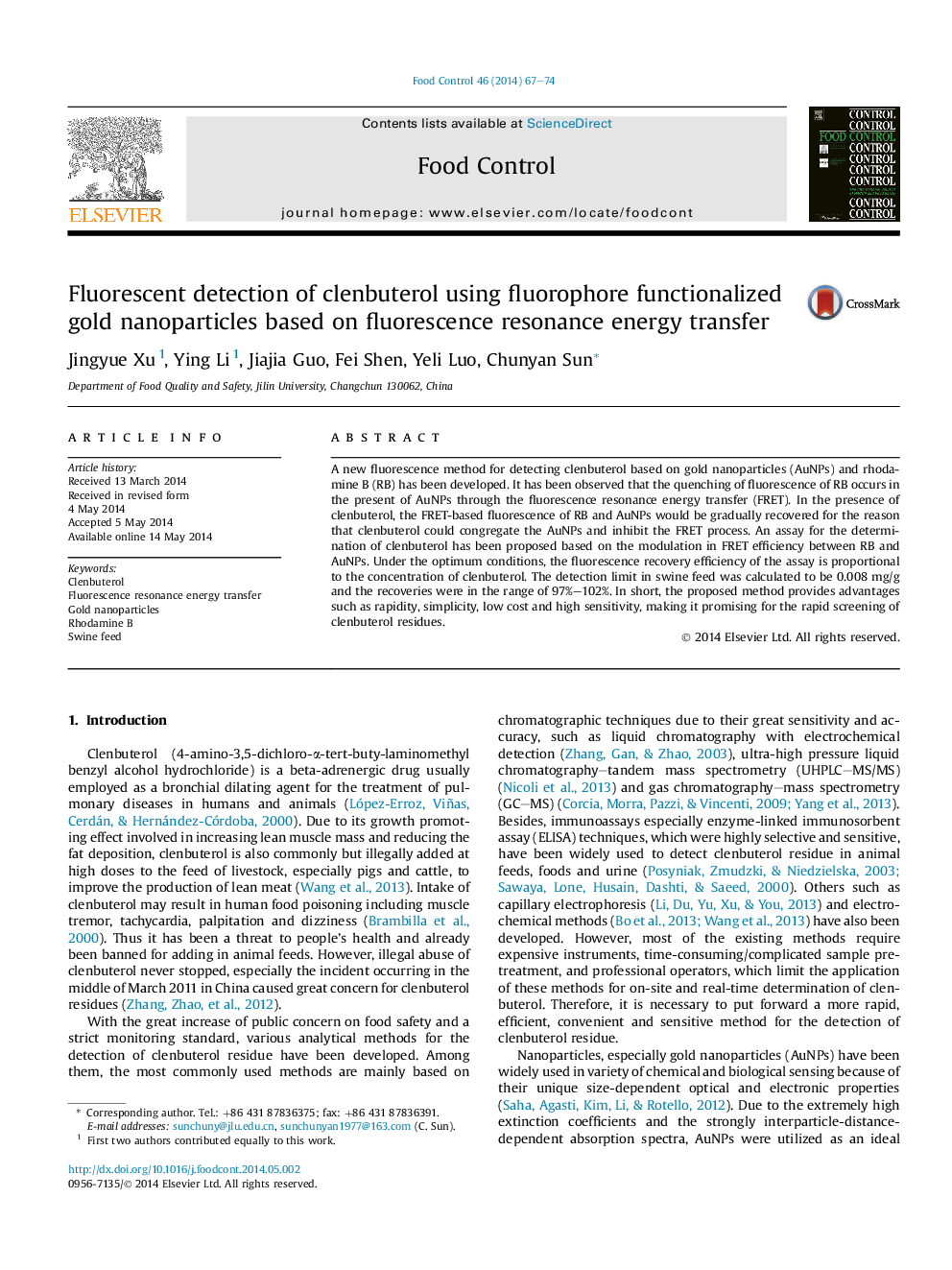| Article ID | Journal | Published Year | Pages | File Type |
|---|---|---|---|---|
| 6391172 | Food Control | 2014 | 8 Pages |
â¢The FRET-based fluorescence method was established to detect clenbuterol.â¢Mechanism was discussed by TEM, spectral analysis and design of control experiments.â¢The screening of clenbuterol can be observed by naked eyes, fluorescence and absorption spectra.â¢The assay provides advantages of rapidity, simplicity, low cost and high sensitivity.
A new fluorescence method for detecting clenbuterol based on gold nanoparticles (AuNPs) and rhodamine B (RB) has been developed. It has been observed that the quenching of fluorescence of RB occurs in the present of AuNPs through the fluorescence resonance energy transfer (FRET). In the presence of clenbuterol, the FRET-based fluorescence of RB and AuNPs would be gradually recovered for the reason that clenbuterol could congregate the AuNPs and inhibit the FRET process. An assay for the determination of clenbuterol has been proposed based on the modulation in FRET efficiency between RB and AuNPs. Under the optimum conditions, the fluorescence recovery efficiency of the assay is proportional to the concentration of clenbuterol. The detection limit in swine feed was calculated to be 0.008Â mg/g and the recoveries were in the range of 97%-102%. In short, the proposed method provides advantages such as rapidity, simplicity, low cost and high sensitivity, making it promising for the rapid screening of clenbuterol residues.
